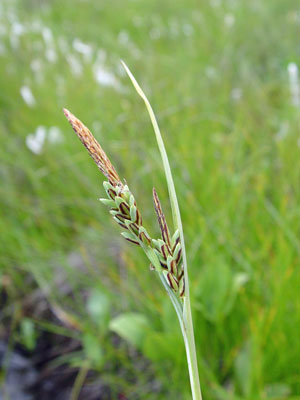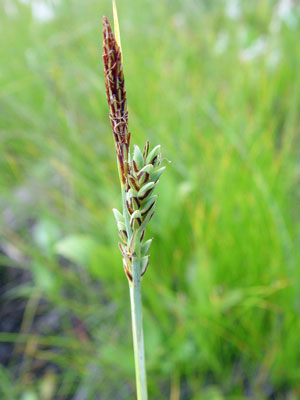DACF Home → Bureaus & Programs → Maine Natural Areas Program → Communities, Plants, and Animals → Rare Plants → Carex livida
Carex livida (Wahlenb.) Willd.

Livid Sedge
- State Rank: S2
- Global Rank: G5
- State Status: Special Concern
Habitat: Calcareous meadows, bogs and depressions. [Open wetland, not coastal nor rivershore (non-forested, wetland)]
Range: Circumboreal, south to Newfoundland, northern Maine, New York, and New Jersey westward to California .
Aids to Identification: Identification of species of the genus Carex is usually difficult and dependent upon rather technical characters. C. livida is in the section Paniceae and it is distinguished by the following characteristics: leaves that are whitish, thin, and narrow (0.5-3.5 mm); perigynia 2.2-4.6 mm long and lacking a beaked tip; stems are smooth and a single stem or a few grow from long rhizomes; sterile, leafy tufts are common. The name refers to the plants bright white roots.

Ecological characteristics: Typically found growing in circumneutral fen communities, often in association with several other sedge species such as Carex exilis.
Phenology: Fruits May - July.
Family: Cyperaceae
Synonyms: Carex livida (Wahlenb.) Willd. var. grayana (Dewey) Fern.; Carex livida (Wahlenb.) Willd. var. radicaulis Paine.
Known Distribution in Maine: This rare plant has been documented from a total of 15 town(s) in the following county(ies): Aroostook, Oxford, Penobscot, Piscataquis, Somerset, Washington.
Reason(s) for rarity: Scarce in southern portion of range; scarcity of suitable calcareous habitat.
Conservation considerations: Maintain hydrology of the circumneutral fen habitats in which it occurs.